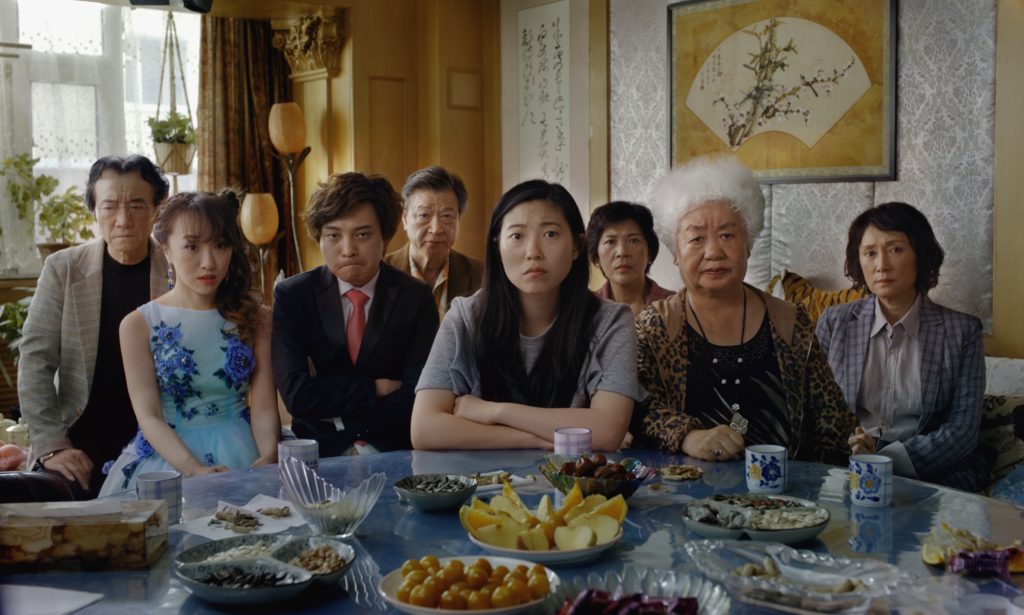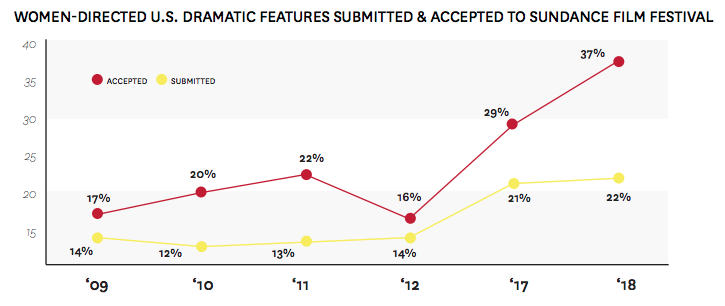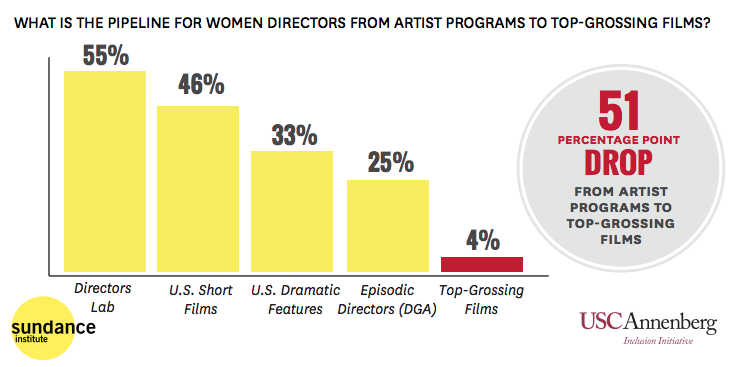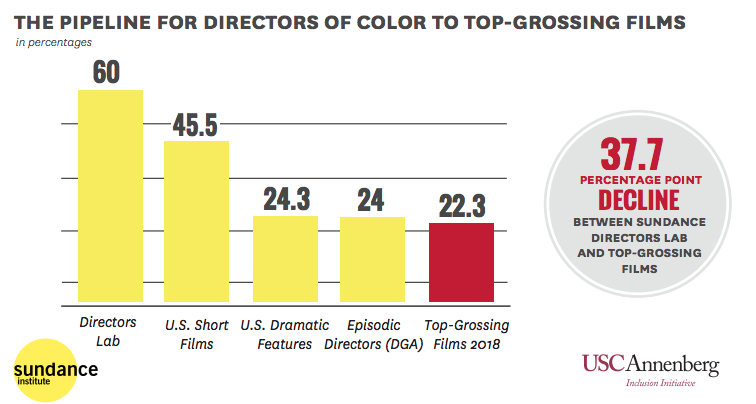Sundance 2019 is in full swing but the Sundance Institute isn’t resting on its laurels. Far from it. The org released a study with the USC Annenberg Inclusion Initiative, entitled “Sundance Institute: Artist Demographics in Submissions & Acceptance,” in which it addresses its strengths in inclusivity as well as its blindspots. The report found that, while there is a strong pipeline of women directors and directors of color thanks to Sundance Institute programs, the festival itself still has a way to go in terms of equality and inclusion.
“This study shows us where the pipeline for women and people of color is robust and where more support is needed,” said Inclusion Initiative founder/director Dr. Stacy L. Smith. “The gains we saw for women over the past decade reveal that change is possible.”
Examining data from the fest’s 2017 and 2018 editions, the study concluded 28 percent of features and episodic projects and 34.1 percent of shorts submitted to Sundance were women-directed or co-directed. Of the accepted titles, 35 percent of features and episodics had at least one woman director, as did 51.4 percent of shorts. In terms of submitted and accepted projects, the festival has still not reached parity. However, things appear to be improving for women filmmakers at Sundance: in a 2009 study, the Inclusion Initiative found that only 13.6 percent of films submitted were women-directed. This figure increased to 21.5 percent in 2017 and 2018.
In 2017 and 2018, 45.5 percent of U.S. shorts and 24.3 percent of U.S. dramatic features accepted to Sundance were directed by a person of color. Fifty-five percent of accepted shorts and 38 percent of accepted dramatic features were helmed by people of color.
Unfortunately, as is usually the case, women of color are especially underrepresented among Sundance submissions and acceptances. Women of color represented less than 15 percent of directors who submitted projects during 2017 and 2018. They comprised just 7.4 percent of the filmmakers of accepted U.S. dramatic features. Eighteen percent of accepted projects — including features, episodics, and shorts — were directed by at least one woman of color.
In contrast, women and people of color made up the majority of the Sundance Institute’s Labs and support programs during the past two years. Women represented 55 percent of the Directors Lab participants, and people of color 60 percent. As great as that is, women and people of color tend to stop directing as they advance in their careers. Women represented only four percent of the top-grossing films’ directors in 2018, and people of color 22.3 percent.
“This kind of data practice is a helpful barometer in our work as Festival programmers,” said Kim Yutani, Sundance Film Festival’s Director of Programming. “Our curatorial process operates independently from demographic information, but periodic and holistic studies of statistics and trends among submissions and acceptances allow us to assess how our work reflects our values of inclusion as we make creative curatorial decisions.”
The needle does seem to be moving at Sundance, but there’s still work to do. It’s especially important that this festival be as inclusive as possible because Sundance plays a very significant role in many filmmakers’ careers. In fact, 30-35 percent of the women and people of color who helmed top-grossing films in recent years “had prior support from Sundance, whether that was a Lab, screening a film at the Festival, or other support,” the study’s authors emphasized.
The report’s key findings, which can be foundbelow, will be discussed at a Sundance panel today, January 25. Participants will include Dr. Smith and “The Chi” creator Lena Waithe. Check out the full study here.
The Sundance Film Festival will take place through February 3.
Women directors are increasingly submitting and being accepted to the Festival
- Submissions by women directors to U.S. Dramatic and U.S. Documentary features at Sundance are significantly up from the last study , but still well below 50% overall. Percentages differ among Festival sections but all are below 50%.
- Films directed by women are accepted to the U.S. Dramatic portion of the Festival at a higher rate relative to their submissions. In 2017, 21% of U.S. dramatic features submitted were directed by women and 29% of those films accepted were directed by women. In 2018, 22% of U.S. Dramatic features submitted were directed by women, yet 37% of those films accepted were directed by women.
- Overall, 28% of all feature films and episodic projects submitted to the Festival were directed by women yet 35% of all of the feature films and episodic content screened at the Festival was directed by women.
More work must be done to support directors of color, especially women of color.
- A total of 27.7% of feature films and episodic content and 45% of shorts programmed at the Festival across two years had at least one director of color attached.
- Representing 20% of the U.S. population, women of color submitted to U.S. Dramatic sections at much lower rates (5.8%) but were accepted at a slightly higher rate (7.4%).
- Men of color submitted 22% of U.S. Dramatic sections but were accepted at a rate of 15.7%, still low in comparison to their U.S. population representation at 20%.
- Less than 15% of directors of submitted projects within each Festival category analyzed were women of color.
Short films are much closer to the U.S. population proportions in submissions and acceptances when compared to feature submissions and acceptances.
- In U.S. Short films, women submit at 33.7% and are accepted at 45.5%.
- People of color submit at 34.2% to the U.S. Shorts category and and are accepted at 45.5%. These figures are much higher than the U.S. Dramatic category.
- This is evidence that a solid pipeline for directors who are women and people of color exists. Based on a previous study from AI2 , Women in Film and the Sundance Institute, one barrier to 3 greater representation at the feature level may occur when women or people of color seek financing for their projects.
Sundance Programs provide a proven talent pipeline from early stage to mainstream commercial success.
- Of the underrepresented directors of top-grossing films from 2015 to 2018, 30% attended a Sundance Lab, screened a movie at the Festival, or had another touchpoint with Sundance prior their popular movie.
- 35% of the female directors who worked on a top-grossing film from 2007 to 2018 had a touchpoint with Sundance prior to directing that film.










